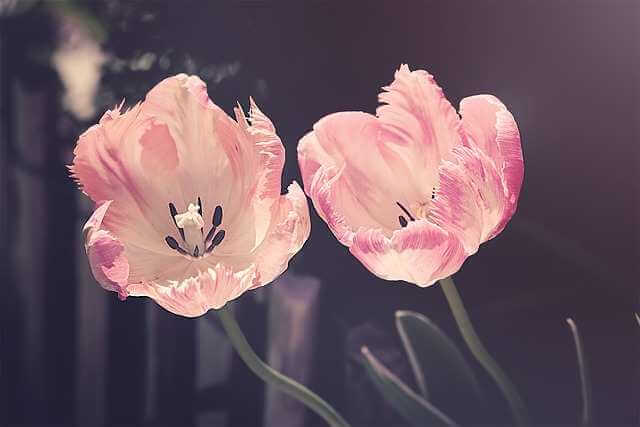Reproduction in Flowering plants: Types, Process and Examples are very important topics for science students. so here we are going to discuss the basics of plant reproduction.
Formation of a new individual from pre-existing one is called reproduction. or in simple words reproduction is multiplication process by which every species makes its new progeny. As we know that this is a very necessary and important process for every species.
Reproduction takes place in each and every living organism on the earth. On our earth, there are billions of species which are completely different from each other. These all species have one common phenomenon which is called reproduction.

The mode of reproduction is different for organism to organism but the purpose of reproduction is the same which is the production of a new generation.
There are various types of modes of reproductions reported in various Kingdomes of the organism.
According to famous taxonomist Whittaker, all organism on the earth is placed into five groups called kingdoms for classification and identification. these are:
- Monera (the prokaryotes: Eubacteria and cyanobacteria (blue-green algae).
- Protista (the single-celled eukaryotes: protozoans and unicellular & multicellular algae with 9 + 2 cilia and flagella (Microscopic)
- Fungi (fungus and related organisms: Haploid and dikaryotic cells, multicellular, generally heterotrophic, without cilia and eukaryotic
- Plantae (the plants: Haplo-diploid life cycles, autotrophic
- Animalia (the animals: Multicellular animals, Cell walls absent, cells without photosynthetic pigments
Here we are going to discuss reproduction in flowering plants only. flowering plants are places in the group Plantae. plants are autotropic. Reproduction in flowering plants is a very large subject. so that we will see here only the basics of Reproduction in Flowering plants. This basic will help to understand the complete process of reproduction.
There are two types of reproduction found in the flowering plants.
- Asexual reproduction
- Sexual reproduction

1. Reproduction in Flowering plants: Asexual reproduction
Asexual reproduction is the method of production of any species in which fertilization not involved. There is no need two of two different types of sexual organs. In asexual reproduction, the process is completely absent. Only mitotic divisions are involved in the asexual reproduction is of plants.
Asexual reproduction is of two types
A) Agamospermy
Agamospermy is a kind of plant apomixis in which embryos and seeds are formed without involving of sexual fusion of gametes and mitotic gametogenesis.
Examples: Ferns, citrus plants etc
Related Article: Parts of a Flowering Plant: The Root, Shoot, Leaf, Flower & Fruit
B) Vegetative propagation
Vegetative propagation is the method of formation of new species from any vegetable part of the body. Budding, fission and fragmentation, gamae, resting, Buds are the main methods of vegetative propagation.
Examples:
There are for the two types of vegetative propagation found in the flowering plants
Natural methods of vegetative propagation- when vegetative propagation occurs naturally
a ) vegetative propagation by stems- bulbs, rhizomes, tubers, offset etc
b) vegetative propagation by roots- murrya, Dalbergia sissoo, dahlia etc
c) vegetative propagation by leaves- Bryophyllum pinnatum
d) vegetative propagation by reproductive parts- onion, globba
Artificial methods of vegetative propagation
- Cutting- begonia
- Layering- strawberry
- Grafting guava
- Plant tissue culture- orchids
2. Reproduction in Flowering plants: Sexual reproduction
Transformation of diploid sporophytic cells into haploid gametes of textiles is called asexual reproduction. Transformation of the cells occurs with the help of meiosis division.
The fusion of haploid gametes of opposite sex forms diploid zygote. The zygote develops into an embryo and embryo ultimately converted into a plant.
The flower is the main part of sexual reproduction. Flower born on a short or long stalk called pedicle. The flower contains the main sexual organs.
Sexual reproduction is completed with the help of these process
- Microsporogenesis –
- Megasporogenesis
- Pollination
- Fertilization
- Embryo development
1. Microsporogenesis-
Mirosporogenesis is the process of formation and differentiation of male Spores (called microspores) from Mother cell. The mother cell is called microspore mother cell (MMS).
Process of microsporogenesis is divided into the following steps-
- Development of anther
- Formation of pollen grains
- Development of male gametophyte (Microgametogenesis)
- Pre pollination development
- Post pollination development
2. Megasporogenesis-
formation of female spores (megaSpores) with the help of meiotic division from Mother cell is called megasporogenesis. Mother cell is called megaspore mother cell.
Megasporogenesis is divided into the following steps
- Formation of megaspore
- Development of female gametophyte(megagametogenesis)
3. Pollination-
the transformer of pollen grains from an anther to the stigma of the same plant or different plant is called pollination. This is the main feature of gymnosperms and angiosperms plants.
Pollination is of two types
Self-pollination- transfer of pollen grain from the anther to the stigma of the same flower is called self-pollination.
Cross-pollination- transfer of pollen grain from the flower of one plant to the stigma of the flower of another plant is called cross-pollination. Cross-pollination is also known as xenogamy
4. Fertilization
Fertilization is the process of fusion of two sexually dissimilar reproductive units or gametes. Strasburger is the discoverer of fertilization.
Process of fertilization
- Germination of pollen grains
- Growth of pollen grains
- The entry of the pollen tube into the ovule
- The entry of pollen tube into the embryo sac
- Double fertilization
Embryo Development
The zygote is the result of fertilization. The zygote formed after the fusion of two sexually deferent reproductive unites called gametes. after few days zygote gets developed called embryo. embryo converted into a plant.
Here we have studied about Reproduction in Flowering plants: Types, Process and Examples. This is a very basic of plant reproduction.
To get handwritten notes on your mobile, join our Telegram, Whatsapp and Facebook groups.
| JOIN OUR SOCIAL MEDIA PLATFORMS | JOIN OUR SOCIAL MEDIA PLATFORMS |
|---|---|
| Join Telegram Channel | Join WhatsApp Groups |
| Like Facebook Page | Subscribe YouTube Channel |
| Follow us on Twitter | Follow us on Pinterest |

